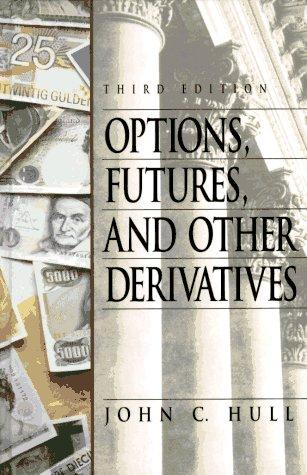Question
Question 44 Use Bartman Industries and Reynolds Incorporateds stock prices and dividends, along with the Market Index, shown below for the period 1997-2002 to answer
Question 44
Use Bartman Industries and Reynolds Incorporateds stock prices and dividends, along with the Market Index, shown below for the period 1997-2002 to answer the following questions
|
| Bartman Industries | Reynolds Incorporated |
| ||
| Year | Stock Price | Div | Stock Price | Div | Market Returns |
| 2002 | $17.250 | $1.150 | $48.750 | $3.000 | 11,663.98 |
| 2001 | 14.750 | 1.060 | 52.300 | 2.900 | 8,785.70 |
| 2000 | 16.500 | 1.000 | 48.750 | 2.750 | 8,676.98 |
| 1999 | 10.750 | 0.950 | 57.250 | 2.500 | 6,434.03 |
| 1998 | 11.375 | 0.900 | 60.000 | 2.250 | 5,602.28 |
| 1997 | 7.625 | 0.850 | 55.750 | 2.000 | 4,705.97 |
Required:
- Use the data given to calculate annual returns for Bartman, Reynolds, and the Market Index, and then calculate average returns over the 5-year period. (Hint: Remember, returns are calculated by subtracting the beginning price from the ending price to get the capital gain or loss, adding the dividend to the capital gain or loss, and dividing the result by the beginning price. Assume that dividends are already included in the index. Also, you cannot calculate the rate of return for 1997 because you do not have 1996 data.)
- Calculate the standard deviations of the returns for Bartman, Reynolds, and the Market Index.
Question 45
An industry wishes to estimate its cost of capital for the use in the analyzing projects that are similar to those that already exist. The firms current capital structure in terms of market value includes 40 percent debt, 10 percent preference shares and 50 percent ordinary shares. The firms debt has as average yield to maturity of 8.3 percent. Its preference shares have a GH 70 par value, an 8 percent dividend, and are currently selling for GH 76 per share. The industrys beta is 1.05, risk-free rate is 4 percent and return on the S&P 500 (the market proxy) is 11.4 percent. The Industry is in the 40 percent marginal tax bracket.
- What is the industrys pre-tax costs of debt, preference shares and ordinary shares?
- Calculate the industrys weighted average cost of capital (WACC) on both a pre-tax and an after-tax basis. Which WACC should the industry use when making investment decisions?
- The industry is contemplating a major investment that is expected to increase both its operation and financial leverage. Its new capital structure will contain 50 percent debt, 10 percent preference shares and 40 percent ordinary shares. As a result of the proposed investment, the firms average yield to maturity on debt is expected to increase to 9 percent, the market value of preference shares is expected to fall to their GH 70 par value and its beta is expected to rise to 1.15. What effect will this investment have to the industrys WACC? Explain your finding.
- Discuss ANY TWO (2) factors that affect the cost of capital or weighted average cost of capital (WACC) in investment appraisal.
Question 46
You have just collected your lump sum from the sale of your building which amounts to GHC100,000.00 in Government of Ghana Treasury Bills (T-bills), GHC60,000.00 in Stocks and the remaining amount in Government of Ghana Bonds Available (3) %. Stocks provide expected return of eight (8) % and a standard deviation of 20%, while Bonds provide an expected return of eight (8) % and a standard deviation 10%. Correlation coefficients between these investment vehicles are as follows:
- Between Stock and Bond = 0.25, Between Stock and T-bills= -0.08, Between Bond and T-bills = 0.15
Required:
- Expected return on the portfolio.
- Risk and coefficient of variation on the portfolio.
Step by Step Solution
There are 3 Steps involved in it
Step: 1

Get Instant Access to Expert-Tailored Solutions
See step-by-step solutions with expert insights and AI powered tools for academic success
Step: 2

Step: 3

Ace Your Homework with AI
Get the answers you need in no time with our AI-driven, step-by-step assistance
Get Started


